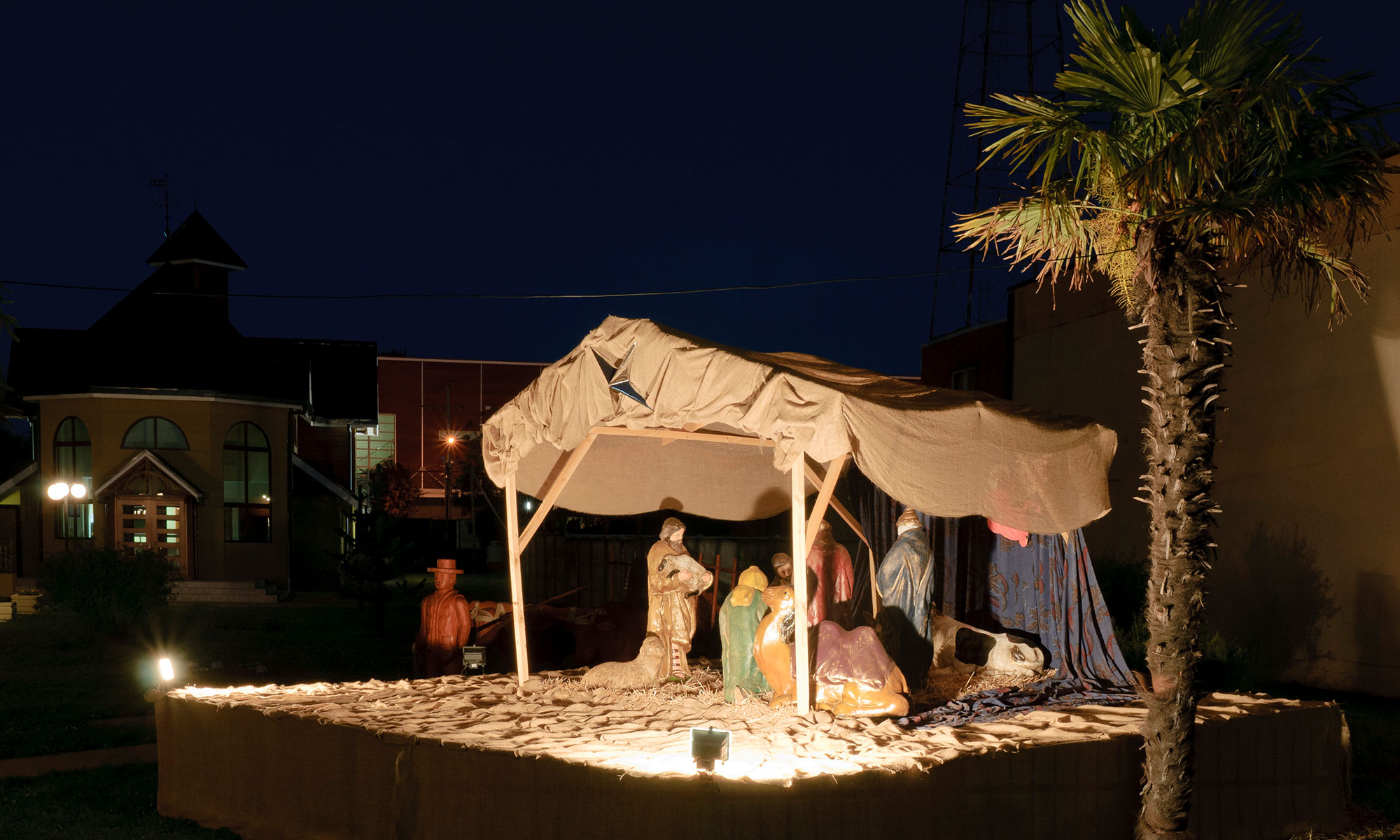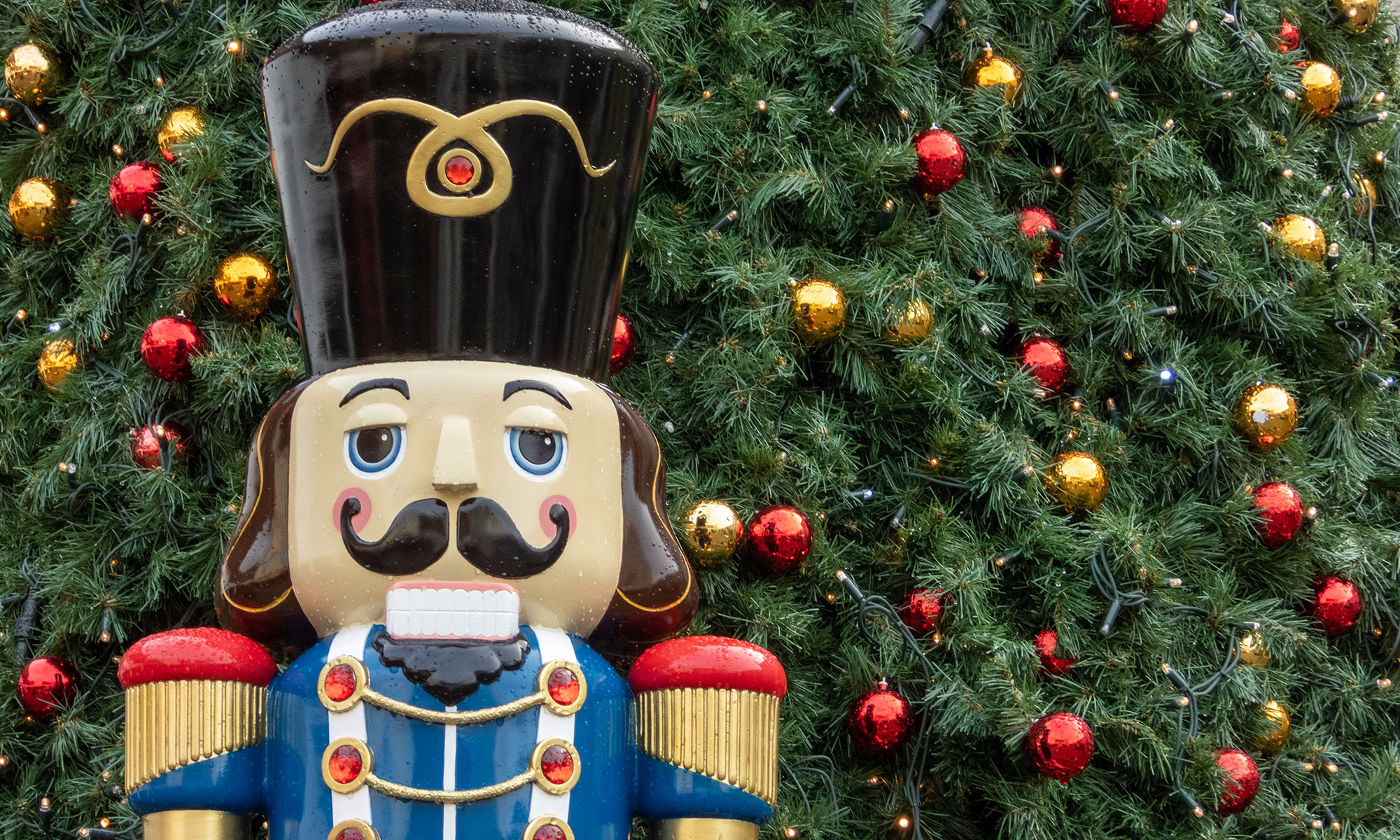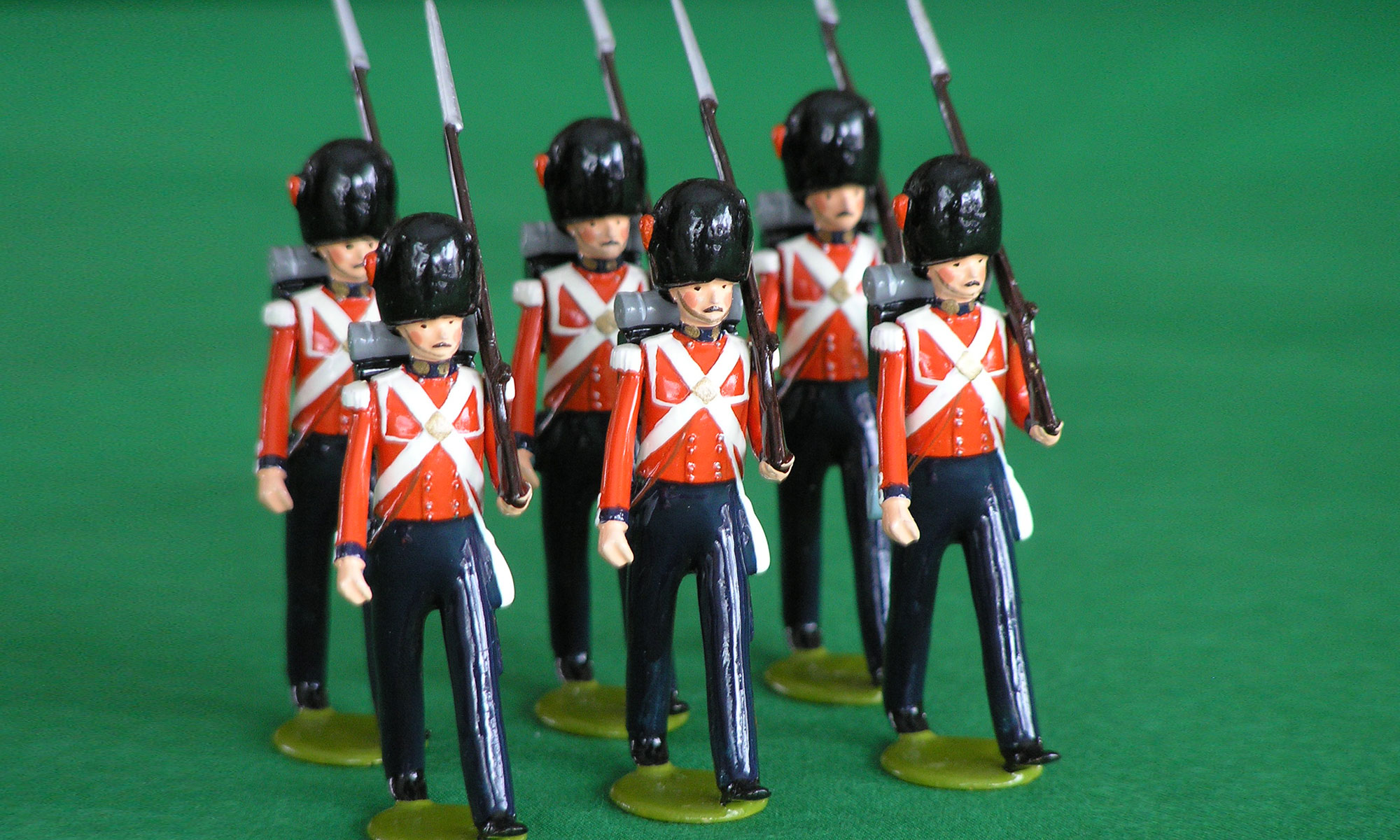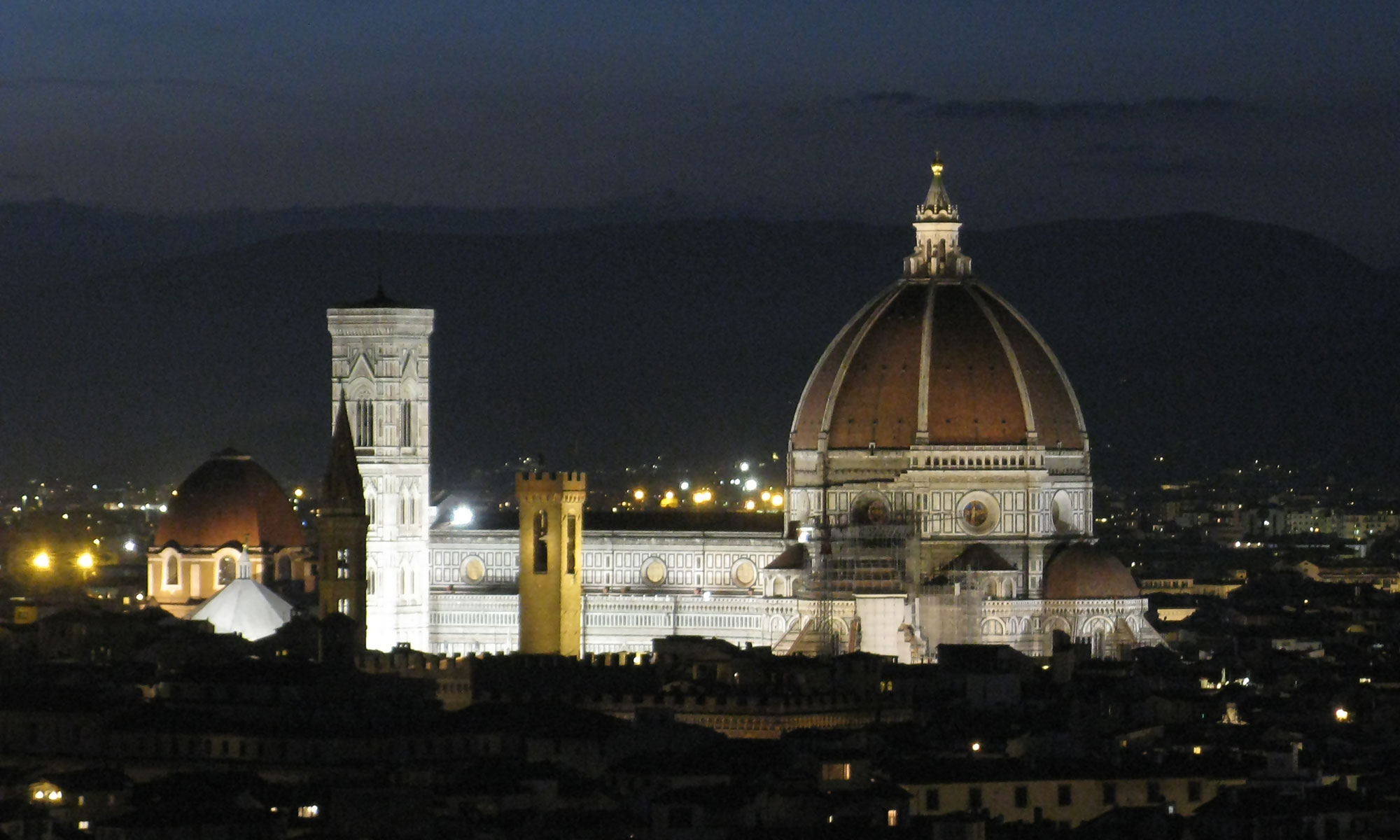Hear them all cheering,
Now they are nearing,
There’s the captain stiff as starch.
Bayonets flashing,
Music is crashing,
As the wooden soldiers march;
Sabers a-clinking,
Soldiers a-winking,
At each pretty little maid…
Here they come! Here they come!
Here they come! Here they come!
Wooden soldiers on parade.
— English song lyrics by Ballard MacDonald
for “The Parade of the Wooden Soldiers”
People “of a certain age” (and by that we mean ones who are old) and with good memories can pinpoint the exact moment and surrounding circumstances signaling the official start of the holiday season that stretches from Thanksgiving to Christmas. These clues could be visual in nature, such as the sudden appearance of life-size Nativity scenes on church lawns, colorful Christmas lights adorning trees and lamp posts, or giant toy soldiers keeping guard in front of decorated homes. Or the clues could be olfactory: the smell of a turkey roasting in the oven, the aroma of eggnog, and the fragrance of cinnamon and gingerbread permeating the house. They could be auditory as well, with sleighbells ringing and carolers singing. All of these sensations elicit the sweet, nostalgic feelings most people experience at Christmastime.
But for some older grownups, the one sure sign in yesteryear that the holiday season had officially started would be the annual broadcast of the 1934 Laurel & Hardy feature film, Babes in Toyland. In the pre-cable era, this film became a popular holiday staple, broadcast repeatedly throughout the 1960s and 1970s on numerous TV stations across the United States during the Thanksgiving/Christmas holiday season. In the U.S., it was often shown under an alternate title: March of the Wooden Soldiers.
Many young fans of the comic duo always looked forward to this annual showing of Babes in Toyland—not only because it was fun to watch (the stop-action animated toy soldiers were a hoot, but Stan Laurel always stole the show), but because it had become a tradition that meant Christmas was just around the corner.
Continue reading “Giant Toy Soldiers and the World of Christmas”





